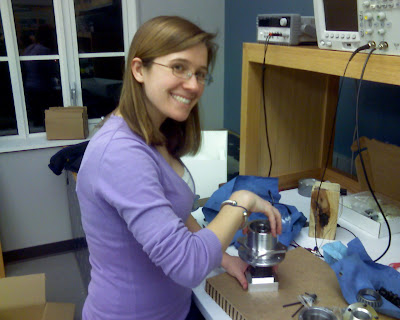Testing
With another late night push until the daylight savings time exacerbated wee hours of Sunday morning, we put Yeti up on blocks, rigged the power wiring, mounted the radio and processor boards, fixed up the remote user interface program, and held our breath as we plugged everything in.
We fired up the GUI and radio and nervously twitched as I pressed the first drive command. We knew we would be there for a while diagnosing various problems with the programming, the radio link, the motor controller or the power electronics so we were completely unprepared when it worked. I'm not sure this has ever happened before in history but we plugged it all together and it drives perfectly.
After a quick team high five, we headed home to crash for a few hours before meeting Steve to test the radar interference this morning.
We found that there was basically no radar interference from leaked EMI from the robot, even when the radar antenna was situated between the two rear wheels. The radio transmission pulses did create a clear interference line on the radar image, but that was with the transmitter located 20' from the antenna. When running this in Antarctica the antenna will be miles away from the radar and only rarely transmitting if ever.
Here's a video from testing today
Mike's been working on simulating our bearing control algorithm. This video shows the yeti following a set of GPS waypoints with noise introduced to the system:







